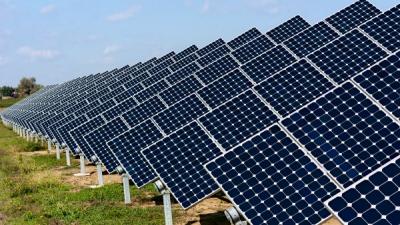

by Lance Schuttler , The Mind Unleashed
Oil proponents have been saying for awhile now that solar doesn’t match up to oil’s energy output, but that statement may have just been proven false. In a major scientific study published in November 2016’s Renewable and Sustainable Energy Review, researchers looked at 29 separate studies and compared the solar photovoltaics (PV) generated as compared to the energy needed to create and install the panels.
The study compiled all the data from the 29 separate studies to gain a clearer picture of solar power’s energetic output. What they found was that only 5 of the 29 studies used recent data, which initially, showed a bleaker picture of what solar can actually generate. However, after compiling data with up to date technological advances in solar energy, the studies showed that solar can generate 14 times the power needed to create the panels.
The author of the study, Rembrandt Koppelar, who is a doctoral researcher at the Center for Environmental Policy, Imperial College London, said that oftentimes solar studies are using data that date back to as far as 1998. In other words, many studies put out there about solar energy, are using technological data that is many years old, and not up to date with current capabilities of solar energy output.
Solar Performs Better
A major study by the Royal Society of London in late 2013 showed that the average energy output of oil and gas is about 17 times the amount invested. However, because of our world’s ever-increasing dependence on lower quality sources, the cost of such sources is more expensive and is becoming more difficult to extract from the Earth. Thus, the number of 17 is continually decreasing.
In the United States for example, that number is at 11 for oil and gas and at 10 for biofuels. Recall that the recent solar study calculated that the rate of return for solar is 14 times the amount invested. Solar is already beating oil, gas and biofuels in the United States.
Koppelar also said that nearly 85% of the world lives in areas that receive a significant amount of sunlight. Areas such as South and Central America, Africa, the southern United States, and most of Asia and Oceania receive enough sunlight year round that the number of 14 would be seen as a “low value.” Essentially, solar will be able to provide much more than 14 times the amount of energy that it takes to create the panels in those areas of the world.
The world has also seen solar energy continue to gain momentum as just last month, the Tesla company announced that they will begin selling solar roof panels in 2017 that will likely be more cost effective than a “regular roof.” Tesla’s CEO Elon Musk said of the announcement:
“It’s looking quite promising that a solar roof will actually cost less than a normal roof before you even take in the value of electricity into account. So the basic proposition would be, ‘Would you like a roof that looks better than a normal roof, lasts twice as long, costs less and by the way generates electricity?’ It’s like, why would you get anything else?”
Additionally, a major project in Asia was announced in October that will see Russia, China, Japan and South Korea create the Asian Super-Grid, which will consists of solar and wind technologies to help power those countries, as well as areas in Europe, southern Africa and Southeast Asia.
The clean energy revolution continues to accelerate, and with this latest news, it is set to move forward even more in the weeks and months ahead. Sharing this latest scientific study with clean energy skeptics could help, as well as sharing it with clean energy proponents. Awareness and knowledge helps to transform situations. We have the technological means to go completely renewable. Share this good news with whoever you can.
Lance Schuttler graduated from the University of Iowa with a degree in Health Science and does health coaching through his website Orgonlight Health. You can follow the Orgonlight Health facebook page or visit the website for more information and other inspiring articles.
Image 1

